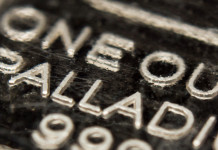
[miningmx.com] — SIMMER & JACK CEO Gordon Miller is right to point out the anomaly in the share prices of the company and its First Uranium subsidiary.
However, he must remember that a piece of string can be pulled from both ends.
The anomaly is that Simmers trades on the JSE at only a nominal premium – and sometimes even a discount – to the value of its 65.5% stake in First Uranium. As I write, Simmers has a market cap of R5.7bn and First Uranium R8.9bn – implicitly valuing Simmers’s gold interests at just R100m or so.
To Miller it’s axiomatic that the market is undervaluing Simmers’s developing gold production. He says Simmers has proven and probable reserves of around five million ounces.
Taking proven reserves of 4.85 million oz, he arrives at a current value of R5.8bn and says there’s an independent valuation of R2.7bn for the Buffelsfontein property (formerly owned by DRDGOLD) alone. And that excludes the TGME property in Mpumalanga, where environmentalists, concerned at the risks of using cyanide in the heap leaching process at its surface operations (there are also underground operations), are delaying the issue of mining permits.
In the September quarter, the loss from mining operations was only 4,7c/share.
Buffels is targeted to produce 140,000oz in financial year 2008, with a cash cost falling from US$714/oz in the first quarter to a projected $487 in the final (March) quarter.
It should become cash positive by the first quarter of financial year 2009. It’s a good story.
But it’s just as logical to argue that the shareholders of Simmers think, conversely, that First Uranium isn’t worth its market price; rather than the Simmers price undervaluing the gold business it’s applying a discount to the First Uranium stake – which isn’t unique with this kind of structure, regardless of how you value the two components.
And there’s good precedent for applying a discount to South African uranium stocks.
Earlier this year I wrote that First Uranium’s rival – Neal Froneman’s Uranium One – was protected against the dip in the uranium price by the much more conservative value it used in its projections. So it was; but it wasn’t protected against the confirmation of rumours that it wouldn’t meet its production targets.
That rightly chopped a quick 25% off its share price and – at 6,150c – it’s 45% off the mid-year high of 11,327c.
First Uranium was listed separately only in April and, at 7,150c, is less than 30% off its May-June high of R100. So it’s holding up relatively well, despite being further from production. But there’s an easy way to settle the debate.
Miller says that if the anomaly isn’t resolved, other steps will be taken. Why wait? Why not just unbundle First Uranium immediately, as Afrikander Lease did with Uranium One, and we’ll soon see where the value lies.











